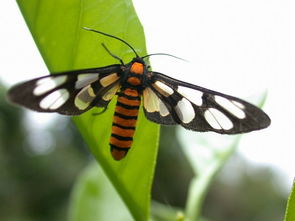
Different Types of Insect Bites
Have you ever found yourself scratching an itchy bump on your skin, only to realize it’s an insect bite? Insect bites can range from mild to severe, and understanding the different types can help you manage them effectively. Let’s delve into the various types of insect bites and what they entail.
1. Mosquito Bites

Mosquito bites are perhaps the most common type of insect bite. They are characterized by small, red bumps that often appear in clusters. While most mosquito bites are harmless, they can transmit diseases such as malaria, dengue fever, and Zika virus. To prevent mosquito bites, use insect repellent, wear long-sleeved clothing, and eliminate standing water around your home.
2. Bee and Wasp Bites

Bee and wasp bites can be more severe than mosquito bites. These insects have stingers that can cause pain, swelling, and redness. In some cases, they can trigger an allergic reaction, which may require immediate medical attention. If you’re stung by a bee or wasp, remove the stinger, apply ice to reduce swelling, and seek medical help if you experience difficulty breathing, swelling of the throat, or hives.
3. Spider Bites

Spider bites can range from mild to life-threatening. Some spiders, like the black widow and brown recluse, have venom that can cause severe reactions. Symptoms of a spider bite may include pain, swelling, and redness. If you suspect you’ve been bitten by a venomous spider, seek medical attention immediately. To prevent spider bites, keep your home clean and seal any cracks or openings where spiders may enter.
4. Tick Bites
Tick bites can be tricky to detect, as they are often small and painless. However, ticks can transmit diseases such as Lyme disease, Rocky Mountain spotted fever, and ehrlichiosis. To prevent tick bites, wear long-sleeved clothing, use insect repellent, and check your body for ticks after spending time in tick-infested areas. If you find a tick attached to your skin, remove it carefully with tweezers and clean the area with antiseptic.
5. Flea Bites
Flea bites are small, itchy red bumps that often appear in clusters. They are most commonly found on the legs, ankles, and buttocks. Fleas can transmit tapeworms and other parasites to both pets and humans. To prevent flea bites, keep your pets well-groomed, vacuum your home regularly, and use flea prevention products on your pets.
6. Bed Bug Bites
Bed bug bites are small, red bumps that often appear in a line or cluster. They can be difficult to detect, as bed bugs are nocturnal and typically hide in furniture, bedding, and other cracks and crevices. Bed bug bites can cause severe itching and may lead to allergic reactions in some individuals. To prevent bed bug bites, inspect your home for signs of bed bugs, use bed bug-proof mattress covers, and vacuum regularly.
7. Fire Ant Bites
Fire ant bites are painful and can cause severe swelling and redness. They are characterized by a pustule at the bite site. Fire ants are found in warm climates and can be aggressive when disturbed. If you’re stung by a fire ant, apply ice to reduce swelling and seek medical attention if you experience difficulty breathing or other severe symptoms.
8. Chigger Bites
Chigger bites are small, red bumps that can cause intense itching. They are caused by the larvae of the harvestman spider. Chiggers are most active in warm, humid weather and can be found in tall grass and brushy areas. To prevent chigger bites, wear long-sleeved clothing and use insect repellent when spending time in chigger-infested areas.
In conclusion, insect bites can range from mild to severe, and it’s important to understand the different types to manage them effectively. By taking preventive measures and seeking medical attention when necessary, you can minimize the risk of complications and enjoy a bite-free summer.







